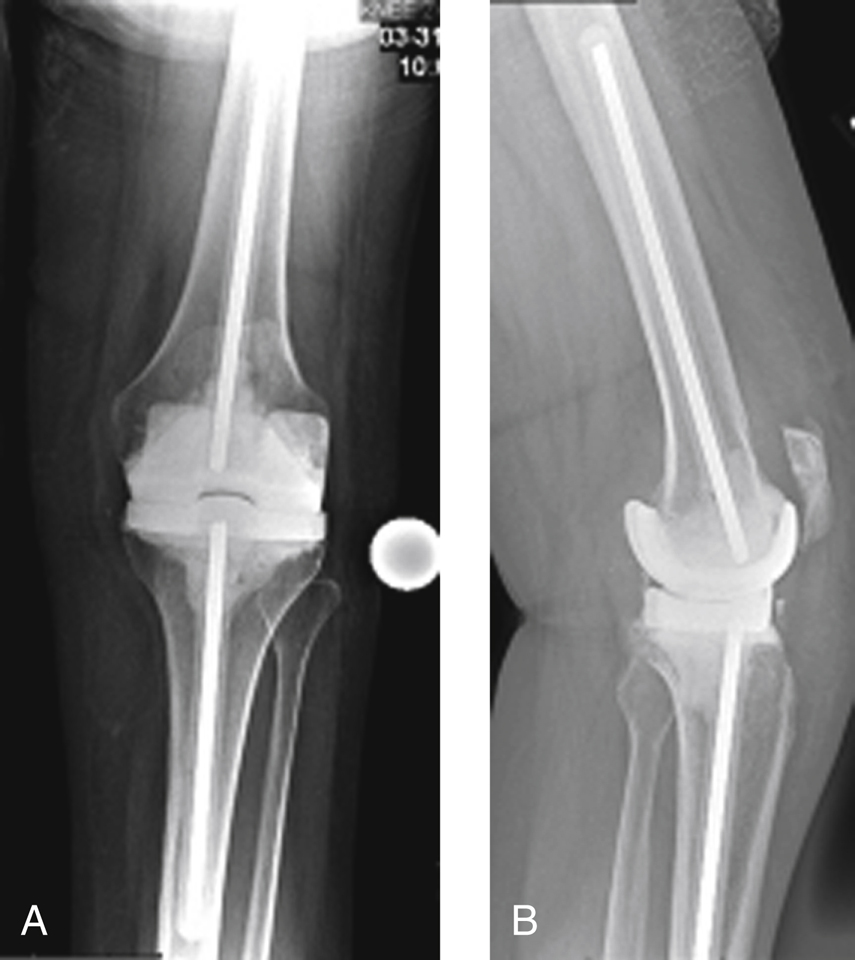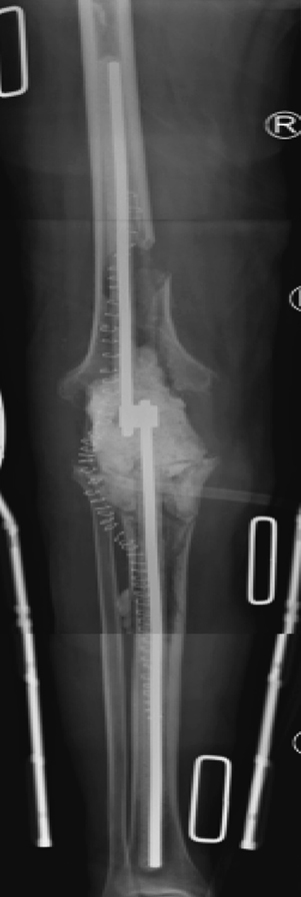Antibiotic Spacers for the Treatment of Infected Total Knee Arthroplasty Cases
Patient Selection
Introduction
Two-stage revision first reported by John Insall in 1983
Two-stage revision remains the benchmark in North America
Overall success with eradication of infection in 80% to 94% of cases
Static Spacers
Knee joint is kept in full extension or slight flexion
Advantages—lower cost, easier implantation, joint immobilization to allow for soft-tissue healing
Disadvantages—postoperative stiffness, spacer dissociation from bone ends resulting in further bone loss, and spacer extrusion resulting in soft-tissue damage
Articulating Spacers (Figure 1, A and B)

Figure 1 Aand B, AP and lateral radiographs of an articulating spacer following an infected primary total knee arthroplasty.
Motion is allowed during the treatment period
Advantages—prevention of extensor mechanism shortening, easier reimplantation surgery, and improved postoperative range of motion
Disadvantages—concern for biofilm on implant surfaces
Inexpensive or recycled components may be used to contain costs. Alternative techniques include the use of prefabricated antibiotic cement spacers or intraoperative cement molds
Stemmed spacers deliver antibiotic to the intramedullary canal, provide additional fixation, and allow for the use of an articulating spacer in cases with bone loss
The authors prefer the use of a preformed cement spacer with added stems
Intramedullary Static Spacer (Figure 2)

Figure 2AP radiograph showing difficult component removal resulting in fracture of the femoral and tibial metaphyseal bone. An intramedullary, static spacer was placed.
Stay updated, free articles. Join our Telegram channel

Full access? Get Clinical Tree


